From Defeat to Victory 1930 - 1949






















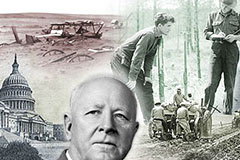








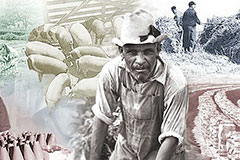





















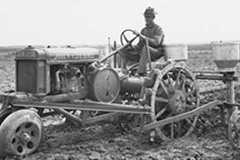



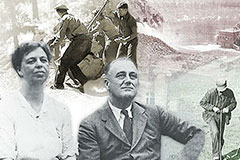













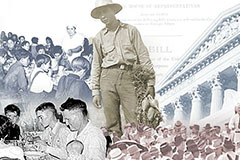


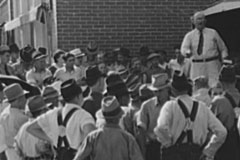



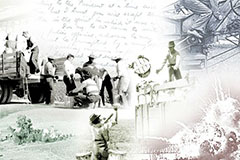











What would you like to find?

Downloadable Media: From Defeat to Victory
Imagery

























Video

Salvaging Drought Cattle
Audio








































In 1930 the impact of the stock market crash of October 1929 was beginning to be felt in rural America. The price per bushel for wheat and corn plummeted more than 25 percent in a single year. As the depression continued, prices for almost all agricultural products dropped even further. The number of acres harvested and the yields per acre also fell for many crops during the first years of the depression due to severe flooding in some parts of the country, and widespread drought in others. Arthur M. Hyde, the Secretary of Agriculture, called the drought "the worst . . . ever recorded in this country."
Agriculture was devastated as fields and streams dried up. Even the great Mississippi River was down to historically low levels. Cattle couldn’t be fed, crops failed, money was short, and there was less food on the table. On top of everything else, agricultural exports crashed; reduced a billion dollars a year during the early 1930s. It was almost more than America could bear.
During the Great Depression what happened to immigrants and ordinary Americans who had started farms and ranches to accomplish their dreams of a better life in America? How did the Great Depression finally end? What effects did it have on agriculture in America? Consider these questions as you explore, "Growing a Nation: From Defeat to Victory."
In 1930 the impact of the stock market crash of October 1929 was beginning to be felt in rural America. The price per bushel for wheat and corn plummeted more than 25 percent in a single year. As the depression continued, prices for almost all agricultural products dropped even further. The number of acres harvested and the yields per acre also fell for many crops during the first years of the depression due to severe flooding in some parts of the country, and widespread drought in others. Arthur M. Hyde, the Secretary of Agriculture, called the drought "the worst . . . ever recorded in this country."

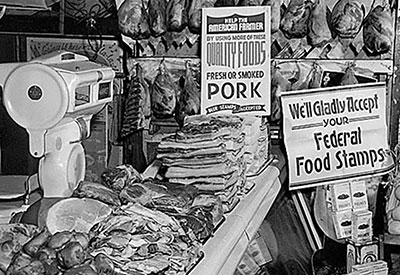
Rotting Food
Because farmers couldn't get a fair price for their produce, food was left to rot during the Depression until the government instituted surplus disposal programs. One observer claimed:
"A number of Montana citizens told me of thousands of bushels of wheat left in the fields uncut on account of its low price that hardly paid for the harvesting. In Oregon I saw thousands of bushels of apples rotting in the orchards. Only absolutely flawless apples were still salable, at from 40 to 50 cents a box containing 200 apples. At the same time, there are millions of children who, on account of [the] poverty [of] their parents, will not eat one apple this winter."
Questions
How frustrated would you feel if you knew food was plentiful, but could find nothing to eat?
What would you tell your children if you were in a situation like this?
What would you do to improvise and make money?
Peter B. Levy, ed., 100 Key Documents in American Democracy (Westport, Conn.: Greenwood Press, 1994).


Japanese Beetles
In the early 1930s, the USDA developed a technique to produce milky disease spore powder in commercial quantities to control damage from Japanese beetles. Japanese beetles were one of the country's most destructive insects. They destroyed the leaves, blossoms, and fruits of more than 275 plants, shrubs, and trees. Milky disease is caused by bacteria that Japanese beetle grubs take in as they work their way through the soil and feed on plant roots. The disease kills a high percentage of grubs over time. This was the first large-scale use of a disease organism to control an insect pest. Visit the Agricultural Research Service website to explore the efforts of scientists to control insects over the years.
Questions
What is the difference between insecticides and bio-controls?
What are the pros and cons of each approach for controlling harmful insects?

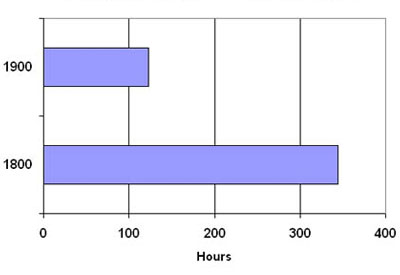
Farmers Burn Their Corn
Some farm families were unable to sell their corn crop as food. Instead, they burned the corn to heat their stoves and homes.
Questions
What do you think of the resourcefulness of the people?
What kinds of things would you have done to try to "make ends meet"?
What have you done in the past to be resourceful?
What do you anticipate doing in the future to make ends meet?
"Productivity Matters," The Ledger (Winter 2003-2004), Federal Reserve Bank of Boston [online].


Life on the Farm
Life on a farm in the 1930s wasn't like it is today. One humorous story highlights the deficiencies of living without certain household improvements so common to our twenty-first-century households:
"I had a horrible choice of either sitting in the dark and not knowing what was crawling on me or bringing a lantern and attracting moths, mosquitoes, nighthawks and bats."
Questions
Would someone without the modern experience of plumbing, electricity, and running water complain about this situation?
How would you feel if you had gone to the city and experienced modern comforts and then returned to the farm? Would you feel unequal?
David M. Kennedy, Freedom from Fear: The American People in Depression and War, 1929-1945 (New York: Oxford University Press, 1999).


Boom to Bust
The Great Plains went through a boom period when land speculators touted the miraculous advantages of farming wheat. Government and private industry encouraged the settlement and development of the region. Experts declared that the wet period they had been experiencing would continue. The "Great Plow-Up" began and wheat was planted. But the wet period ended. View this Ken Burns Boom Time video clip and consider the following question.
Questions
Who do you think was responsible for the misinformation that led to farmers plowing up so much land and over produce wheat?
Ken Burns in the Classroom
Agriculture was devastated as fields and streams dried up. Even the great Mississippi River was down to historically low levels. Cattle couldn’t be fed, crops failed, money was short, and there was less food on the table. On top of everything else, agricultural exports crashed; reduced a billion dollars a year during the early 1930s. It was almost more than America could bear.

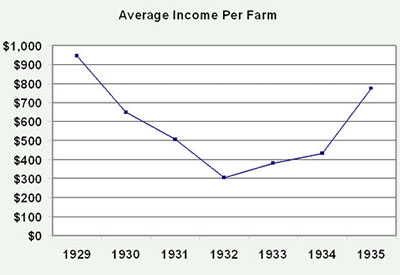
Farmers' Income Steadily Declines
Questions
What happened to farmer's lives as they continued to lose money?
How does this problem still occur in society today?
Would you choose to stay on the farm if it meant making less money?
What are the career options for a person who is interested in agriculture, but doesn't want to become a farmer?
"Agriculture--Farms, Acreage, Income, and Foreign Trade," Mini Historical Statistics, U.S. Census Bureau [online].


Penny Auctions
To make sure that the banks did not profit from the foreclosure of farms, farmers banded together and pressured bidders to place only very low bids. Visit the New Deal Network website to learn more about penny auctions and then answer the following questions.
Questions
Why were farmers and rural communities so willing to join together?
How did they protect their community interests?
Why were they less hospitable to outsiders?
What can you do to prepare for future economic shortages?

The American Great Plains: Beautiful Soil
Learn more about the grasslands of the Great Plains (which stretches from Canada to Southern Texas, from the Missouri River to the Rocky Mountains) and meet some of the people who lived in the Great Plains during the Dust Bowl in this Ken Burns video clip, The American Great Plains: Beautiful Soil.
Questions
What do you think was the biggest mistake farmers made leading to the Dust Bowl?


As America's economic depression settled on the country, the Hoover administration made efforts to help. A Federal Drought Relief Committee, headed by Secretary of Agriculture Hyde, was established in 1930. The Committee recommended reduced rail rates for hay, feed, and water and increased road and dam construction in drought areas.
In 1932 the situation worsened for American farmers and ranchers. The price of a bushel of corn dropped from seventy-six cents in 1929 to twenty-nine cents in 1932; beef prices dropped from ten cents to five cents per pound. Nils A. Olsen, Cheif of the USDA Bureau of Agricultural Economics, attributed the falling prices to two things: "The first has its origins in such revolutionary developments as the change from horses to motors," and the second, farmers were not adjusting to a "wholly new pattern of production and trade." Farmers lacked the education and skills they needed to understand how the market was working. It was obvious that the "giant" of the countryside needed better training.
To remedy the problem, the USDA tried to teach farmers to balance supply with demand. They urged farmers to "readjust" by voluntarily planting less of surplus crops like corn and wheat. The USDA also promoted increased production of less plentiful crops; for instance planting tomatoes a little earlier than normal in order to produce a more abundant crop, which would put more money into farmers' pockets.
In 1932 the situation worsened for American farmers and ranchers. The price of a bushel of corn dropped from seventy-six cents in 1929 to twenty-nine cents in 1932; beef prices dropped from ten cents to five cents per pound. Nils A. Olsen, Chief of the USDA Bureau of Agricultural Economics, attributed the falling prices to two things: "The first has its origins in such revolutionary developments as the change from horses to motors," and the second, farmers were not adjusting to a "wholly new pattern of production and trade." Farmers lacked the education and skills they needed to understand how the market was working. It was obvious that the "giant" of the countryside needed better training.

Herbert Hoover
In 1929, Herbert Hoover became the thirty-first President of the United States. Visit the White House website to read a brief biography of this unique president and then answer the following questions.
White House website - Herbert Hoover
Questions
What leadership qualities did Herbert Hoover possess that were important to his success in the presidency?
What were the more important events that occurred during his presidency?


The Need For Agricultural Research
In 1932, Secretary of Agriculture Arthur Hyde wrote, "It is frequently said that agricultural research is not required at present because it tends to stimulate agricultural production. In the face of existing surpluses, the country needs not more but less agricultural research. This faulty logic has attracted wide attention."
Questions
Why was research so important, even in the face of overproduction?
Do you think agricultural research was good or bad at this period of time? Why or why not?
Why should or shouldn't we continue research today?
Yearbook of Agriculture, 1933 (Washington, D.C.: U.S. Department of Agriculture, 1933).


Red Squill
Throughout the ages, rodents have caused more damage to agriculture than any other wildlife. Rodents, particularly rats and mice, eat and damage food in fields and storage facilities. Their urine and droppings spoil food, and they can also transmit diseases to people. During the 1930s, the USDA estimated that rodents caused more than $200 million in crop losses annually.
In the 1920s, USDA scientists developed a highly effective rat killer called red squill from the bulb of a flowering plant from the Mediterranean region. This poison was considered less dangerous to humans and other animals because, although toxic, it is also a powerful emetic so most animals will throw up the red squill poison if it is ingested. Rats, however, are unable to vomit and are thus highly susceptible to its poisonous effects.
Questions
Why was it essential to find creative ways to eliminate pests?
What pests affect agriculture and homes today?
What role does research play in developing new pesticides and poisons?
Routt J. Reigart, Recognition and Management of Pesticide Poisonings, 5th ed. (Washington, D.C.: U. S. Department of Agriculture, 1999); and The Yearbook of Agriculture, 1934 (Washington D.C.: United States Department of Agriculture, 1934).
To remedy the problem of low crop prices the USDA tried to teach farmers to balance supply with demand. They urged farmers to "readjust" by voluntarily planting less of surplus crops like corn and wheat. The USDA also promoted increased production of less plentiful crops; for instance planting tomatoes a little earlier than normal in order to produce a more abundant crop, which would put more money in farmers pockets.
USDA

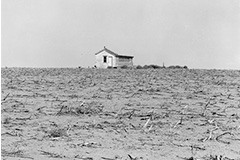
Federal Drought Relief Committee
As America's economic depression settled on the country, the Hoover administration made efforts to help. A Federal Drought Relief Committee, headed by Secretary of Agriculture Hyde, was established in 1930. The Committee recommended reduced rail rates for hay, feed, and water and increased road and dam construction in drought areas.
Questions
Why was a Federal Drought Relief Committee essential on a national level?
How would a reduction in rail rates help the economic depression?

USDA Drought Research
Even before the droughts of the 1930s, the USDA was conducting research on drought conditions. Researchers "demonstrated that drought begins when soil moisture is so diminished that vegetation is unable to absorb water from the soil rapidly enough to replace the water lost to the air by plant transpiration."
Questions
Did researchers know a severe drought was on its way?
Why were they researching droughts if there wasn't a terrible drought at the time?
ARS Timeline: 138 Years of Ag Research, U.S. Department of Agriculture [online].


Although farmers and ranchers experimented with new agricultural methods, the economic situation continued to go downhill for rural America during the early 1930s. President Hoover believed that the economy would fix itself in time, but the storm cloud continued to darken.
As the summer of 1932 turned toward autumn, the depression deepened. Frustrated and angry, Iowa farmers sponsored a Farmer's Holiday - a strike designed to keep all farm products off the market. The net income of farmers was less than one-third of what it had been in 1929, which meant they earned a lot less money. In other areas of the country farmers stormed into towns and simply took what they needed off of grocery shelves. Discontent grew so much that farmers gathered from the Dakotas, Minnesota, Iowa, and Nebraska and pledged to protect one another's homes, farms, livestock, and machinery from being taken through foreclosure.
Farmers began to listen to the presidential candidate, Franklin Delano Roosevelt. In a campaign speech Roosevelt declared, "We have no actual famine... our... agricultural mechanism can produce enough to spare. Our government... owes to everyone an avenue to possess... plenty for his needs, through his own work."
Many Americans became hopeful for change following Roosevelt's election in November 1933. Roosevelt promised more help through the federal government for Americans suffering during the Depression.
Although farmers and ranchers experimented with new agricultural methods, the economic situation continued to go downhill for rural America during the early 1930s. President Hoover believed that the economy would fix itself in time, but the storm cloud continued to darken.


Removing Soil From Cultivation
Assistant Secretary of Agriculture Rexford G. Tugwell said on August 4, 1933, "We must study and classify American soil, taking out of production not just one part of a field or farm, but whole farms, whole ridges, perhaps whole regions. . . . It has been estimated that when lands now unfit to till are removed from cultivation, something around two million persons who now farm will have to be absorbed by other occupations."
Questions
Where would so many farmers go?
Do we see mass migrations of people today?
What percentage of Americans live in urban areas today?
Frank Freidel, ed., The New Deal and the American People (Englewood Cliffs, N.J.: Prentice Hall, 1964).

Taylor Grazing Act
Under the Homestead Act of 1862, unclaimed public lands, mainly in the West, were available to settlers, or homesteaders, who would live on and improve the land. Unfortunately, many of the homesteads were on land that was more suitable for grazing cattle than growing crops. Droughts, failed attempts at farming, and overgrazing by cattle and sheep further depleted the soil in many areas. Listen to this audio clip from What Price America to learn how the Taylor Grazing Act addressed some of these problems:
Questions
What is conservation? Did the Taylor Grazing Act strike a good balance between conservation and use of the land? What are other examples of resources that Americans need to both use and conserve?
Audio - What Price America, 1939, courtesy of the Resettlement Administration, U.S. Department of the Interior.

Beef-Canning Program
During the droughts and dust storms of the 1930s, crops and rangeland for livestock were destroyed. The government initiated several programs to help struggling farmers and rural families without enough food. The State Extension Service, affiliated with land grant colleges, the USDA, and FERA, the Federal Emergency Relief Administration, found a way to make the best of this situation by buying starving cattle from farmers, slaughtering them, and canning the meat for hungry families. Watch this film to learn more about the program.
Questions
Who was helped by the beef-canning program?
How do government programs adapt to meet the challenges facing America?
Do you think it is the responsibility of the government to assist Americans in need?
How are government programs paid for?
Film - Salvaging Drought Cattle in Texas, 1934, courtesy of U.S. National Archives and Records Administration.
Farmers began to listen to the presidential candidate, Franklin Delano Roosevelt. In a campaign speech Roosevelt declared, "We have no actual famine…our…agricultural mechanism can produce enough to spare. Our government…owes to everyone an avenue to possess…plenty for his needs, through his own work." Many Americans became hopeful for change following Roosevelt’s inaugurated in November 1933. Roosevelt promised more help through the federal government for Americans suffering during the Depression.


Desperation and Depression
Farmers became desperate when the situation seemed hopeless during the early years of the Depression. Some farmers organized to protest against low farm prices. One farmer voiced his desperation this way: "They say blockading the highways [is] illegal. I say, seems to me there was a Tea party in Boston that was illegal too. What about destroying property in Boston Harbor when our country was started?"
Questions
Do you think that this farmer was justified in his feelings?
Are there people in the United States who still feel this way? What are some of the issues?
Robert S. McElvaine, The Great Depression (New York: Time Books, 1984).


Rural Areas Lose Workers
"Between 1920 and 1930 rural America lost roughly 6 million people from the farms. Three fourths of them were under 35 years old. There wasn't enough work for them when they went to the cities so they came home."
Questions
How could rural America provide for so many jobless people?
What ideas do you have that might have helped solve the problem of unemployment in the countryside?
The Yearbook of Agriculture, 1934 (Washington D.C., U.S. Department of Agriculture, 1934).

Civilian Conservation Corps
The Civilian Conservation Corps (CCC) formed an important part of President Franklin D. Roosevelt's New Deal programs. It put thousands of unemployed men to work throughout the country in national parks, forests, and other public lands.
"Two million men worked as CCC recruits in more than 1,200 camps across the country between 1933 and 1942. Initially known as the Emergency Conservation Work program, the CCC was created by President Franklin D. Roosevelt to provide impoverished youth of the Depression the opportunity to improve their education and ability to earn a living. It also realized Roosevelt's desire to conserve the human and natural resources of the nation." Visit the National Park website honoring the Civilian Conservation Corps and answer the following questions.
Questions
Why did President Roosevelt create the CCC?
Why were young men so willing to participate in the "three C's?"
The CCC has been resurrected today at the "Youth Conservation Corp." Would you consider joining?


President Franklin D. Roosevelt took on the “farm problem” immediately. He told men, women, and children, working in the fields that he understood their struggles because he was a farmer too. He visited poor farmers, shook their hands, and promised change. His wife, Eleanor, was also deeply dedicated. She fought for the rights of sharecroppers and other minority groups in trouble. Together, the new President and his wife firmly believed that solving the agricultural problems facing Americans was fundamental to relieving the trouble caused by the Depression.
Many of President Roosevelt’s “new deal” programs were designed to help farmers, including: the Agricultural Adjustment Acts, the Civilian Conservation Corps, the Farm Security Administration, the Soil Conservation Service and the Rural Electrification Administration. These programs focused on improving farm services, reducing farm surpluses and increasing prices. The USDA and other agencies quickly acted to implement these programs. The goals were to improve the economy and narrow the gap between urban and rural living standards.
Programs like the Tennessee Valley Authority in the Southeastern United States, were created to promote new agricultural techniques, replant forests and improve habitat for fish and wildlife. Electricity generated by newly constructed dams made life easier and farms more productive. Momentous change was on the way.
During the first half of the 1930s much of the nation faced devastating drought. Numerous dust storms swept away valuable layers of topsoil across Texas, Oklahoma, Kansas, Arkansas, New Mexico, and Colorado. These dust storms were made worse by the practice of plowing fields and leaving the soil exposed before planting in the spring. The relentlessly blowing winds turned these areas into the "Dust Bowl." Thousands of farmers were forced to move from the "dust blown deserts of shattered dreams."
"The Dust Bowl was caused by several economic and agricultural factors, including federal land policies, changes in regional weather, farm economics and other cultural factors. After the Civil War, a series of federal land acts coaxed pioneers westward by incentivizing farming in the Great Plains. The Homestead Act of 1862, which provided settlers with 160 acres of public land, was followed by the Kinkaid Act of 1904 and the Enlarged Homestead Act of 1909. These acts led to a massive influx of new and inexperienced farmers across the Great Plains.
Many of these late nineteenth and early twentieth century settlers lived by the superstition “rain follows the plow.” Emigrants, land speculators, politicians and even some scientists believed that homesteading and agriculture would permanently affect the climate of the semi-arid Great Plains region, making it more conducive to farming. This false belief was linked to Manifest Destiny—an attitude that Americans had a sacred duty to expand west. A series of wet years during the period created further misunderstanding of the region’s ecology and led to the intensive cultivation of increasingly marginal lands that couldn’t be reached by irrigation.
Rising wheat prices in the 1910s and 1920s and increased demand for wheat from Europe during World War I encouraged farmers to plow up millions of acres of native grassland to plant wheat, corn and other row crops. But as the United States entered the Great Depression, wheat prices plummeted. In desperation, farmers tore up even more grassland in an attempt to harvest a bumper crop and break even.
Crops began to fail with the onset of drought in 1931, exposing the bare, over-plowed farmland. Without deep-rooted prairie grasses to hold the soil in place, it began to blow away. Eroding soil led to massive dust storms and economic devastation—especially in the Southern Plains." (History.com, 2022)
https://www.history.com/topics/great-depression/dust-bowl


What caused the Dust Bowl?
The History.com website notes the Causes of the Dust Bowl and the American Experience Timeline highlights the major events of the Dust Bowl (1931-1939). These resources provide insight into the following questions.
Questions
- What were the causes of the Dust Bowl?
- Did government have a role in the cause of the Dust Bowl?
- How did government respond to the environmental, social, and economic Dust Bowl issues?

Government Intervention
Franklin D. Roosevelt believed farmers could become successful once again if they produced less with government support. Roosevelt said:
"Without our help the farmers cannot get together and cut production, and the Farm Bill gives them a method of bringing their production down to a reasonable level and of obtaining reasonable prices for their crops. I have clearly stated that this method is in a sense experimental, but so far as we have gone we have reason to believe that it will produce good results.
"It is obvious that if we can greatly increase the purchasing power of the tens of millions of our people who make a living from farming and the distribution of farm crops, we will greatly increase the consumption of those goods which are turned out by industry."
Questions
Do you believe government intervention is necessary to solve problems?
In what ways does the government intervene in our daily lives?
Franklin D. Roosevelt, Fireside Chat, Monday, July 24, 1933.

Great Plains Drought Area Committee
In 1935, President Franklin D. Roosevelt formed the Great Plains Drought Area Committee to study the current Great Plains drought and to make recommendations that would make future droughts less disastrous. One discovery the committee made was that human actions had significantly contributed to the severity of the drought.
In August of 1936, the committee reported: "One primary source of disaster has been the destruction of millions of acres of this natural cover [prairie grass], an act which in such a series of dry years as that through which we are now passing left the loose soil exposed to the winds. This destruction has been caused partly by over grazing, partly by excessive plowing. It has been an accompaniment of settlement, intensified in operation and effect since the [First] World War."
Questions
What natural disasters are we faced with today that are comparable to the Dust Bowl?
In what ways do humans contribute to these natural disasters?
How can science and other forms of research help to compensate for them?
Morris Cooke et al., Report of the Great Plains Drought Committee, New Deal Network (online); audio and transcript of Franklin D. Roosevelt, Fireside Chat 8, September 6, 1936, "On Farmers and Laborers," courtesy of Presidential Recordings Program, Miller

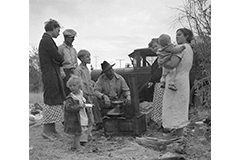
Squatter Camps
The author John Steinbeck took an interest in the lives of the migrant workers (also called "squatters") who fled the Dust Bowl regions to look for work in his native California, the setting for most of his writing. Steinbeck drew much of the material for his monumental novel, The Grapes of Wrath, from the true-life stories of these migrant laborers. He wrote:
"When in the course of the season a small farmer has need of an influx of migrant workers he usually draws from the squatters' camps. By small farmer I mean the owner of the five to 100 acre farm, who operates and oversees his own farm.
"Farms of this size are the greatest users of labor from the notorious squatter camps. A few of the small farms set aside little pieces of land where the workers may pitch their shelters. Water is furnished, and once in a while a toilet. Rarely is there any facility for bathing. A small farm cannot afford the outlay necessary to maintain a sanitary camp."
Questions
What major problems did migrants face in "squatter camps"?
What would you have been willing to sacrifice to find a better life in California?
John Steinbeck, On the Road to the Grapes of Wrath (Berkley, Calif., Heyday Books, 1936).
Despite the opposition, President Roosevelt quickly signed the Agricultural Adjustment Act of 1933. It brought immediate change. The Act provided for crop reduction through plow ups (paying farmers not to plant) and slaughtering millions of pigs. For example, under the first cotton contracts, growers agreed to plow up twenty-five to fifty percent of their crop before harvest, in exchange for cash payments. Henry Wallace hoped that prices would rise in response to reduced production. Some farmers protested, but the plan showed positive results.


The Farmers Holiday Movement
As the summer of 1932 turned toward autumn, the depression deepened. Frustrated and angry, Iowa farmers sponsored a Farmer’s Holiday—a strike designed to keep all farm products off the market. The net income of farmers was less than one-third of what it had been in 1929, which meant they earned a lot less money. In other areas of the country farmers stormed into towns and simply took what they needed off of grocery shelves. Discontent grew so much that farmers gathered from the Dakotas, Minnesota, Iowa, and Nebraska and pledged to protect one another's homes, farms, livestock, and machinery from being taken through foreclosure.
The Farm Holiday movement was established by farmers who wanted to protest the low prices they were receiving for their products. Visit the Wessels Living History Farm website to learn more about this protest movement and then answer the following questions.
Questions
What were farmers hoping to achieve by protesting?
Are there certain times when the occasion necessitates protesting and direct action to change policies? Why or why not?

Fireside Chat 8, The Drought and The Dust Bowl
On Farmers and Laborers: Fireside Chat 8 (September 6, 1936)
Roosevelt seeks to remind farmers and laborers of how they rely on one another two months before the election, in which he successfully carries both the agricultural and industrial states. After the 1936 drought, the president outlines the relief efforts being made for the farmers, while also highlighting programs under way for labor.
Listen to entire Fireside Chat "Farmers and Laborers: Fireside Chat 8" and answer the following questions.
Produced September 6, 1936, 25:12 minutes
Questions
What are the three most significant concepts in this broadcast impacting farmers and laborers?

What Price America?
This sound recording dramatizes land settlement under the 1862 Homestead Act, conflicts between homesteaders and cattlemen, conflicts of both with sheepmen, lawlessness regarding use of the public range, the Dust Bowl and soil conservation in general. Settlement, exploitation, and ecological decline of the Great Plains through overgrazing and intensive cultivation, from the Homestead Act (1862) through the Taylor Grazing Act are presented.
Listen to radio broadcast "What Price America" and answer the following questions.
Produced on April 22, 1939 (30:11 minutes)
Questions
What are the three most significant concepts in this broadcast impacting agriculture and westward expansion?

Westward Movement and Resettlement
This sound recording by the Resettlement Administration dramatizes the westward march of pioneers through hardships, native American encounters, and their soil erosion impacts in the Midwest. Series of brief dramatic episodes cover, in very general terms, the Westward Movement, the influence of the Kansas-Nebraska Act on homesteading, the impact of the railroads, land frauds, and the beginning of soil erosion leading finally to the "Dust Bowl" crisis.
Listen to radio broadcast "The Westward Movement" and answer the following questions.
Produced in 1936, 15:16 minutes
Questions
What are the three most significant concepts in this broadcast impacting farmers moving westward?
President Franklin D. Roosevelt took on the "farm problem" immediately. He told men, women, and children, working in the fields that he understood their struggles because he was a farmer too. He visited poor farmers, shook their hands, and promised change. His wife, Eleanor, was also deeply dedicated. She fought for the rights of sharecroppers and other minority groups in trouble. Together, the new President and his wife firmly believed that solving the agricultural problems facing Americans was fundamental to relieving the trouble caused by the Depression.

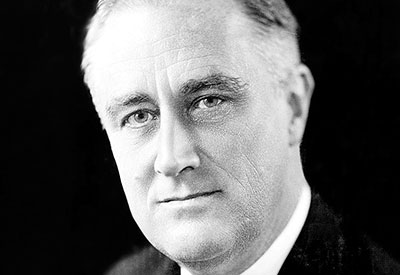
FDR Becomes President
Franklin Delano Roosevelt (FDR) became the thirty-second President of the United States in March of 1933. Visit the Franklin D. Roosevelt Presidential Library and Museum website to gain additional insights about the man who led the country during a part of the Great Depression and the majority of WWII.
Questions
What character qualities did FDR possess that would enable him to be elected to four terms of office?
What actions did he take to lead the country during the war?

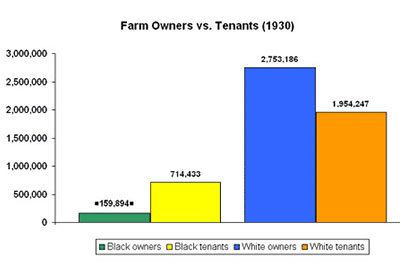
Farm Owners vs. Tenants (1930)
In 1930, African Americans owned 159,894 farms and worked as tenants on 714,433 farms. White farmers owned 2,753,186 farms and accounted for 1,954,247 tenant farmers.
Questions
What prevented African Americans from owning their own land?
How could they come out on top in the end?
What are other possible explanations for the data on the chart?
Historical Statistics of the U.S: From Colonial Times to 1970 (Washington, D.C.: U.S. Bureau of Commerce, 1975).

Tenant Farmers
Throughout her life, Eleanor Roosevelt championed many causes on behalf of the poor. She believed tenant farmers were severely mistreated during the Depression and supported a controversial group that tried to help. Read this short history of the Southern Tenant Farmer's Union and answer the questions.
Southern Tenant Farmers' Union
Questions
Why was it important for tenant farmers to join together in order to protest for change?
Why should tenant farmers receive protection from the government?

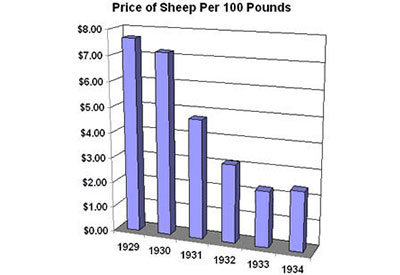
Price of Sheep Per 100 Pounds
During the Depression, not only did the value of produce decrease, the price of livestock also plummeted. The decline in the price of sheep meant that ranchers earned only about one-third of the income they had made five years earlier.
Questions
How would a 65 percent reduction in wages affect your home?
What would you and your family do if this happened to you?
National Agricultural Statistics Service [online].


In March 1933, Henry A. Wallace took office as the newly appointed Secretary of Agriculture. His roots lay in Iowa, a large farming estate. He was a farmer, as well as a geneticist and farm philosopher. Through his family newspaper, Wallace’s Farmer, he had peppered rural America with new ideas aimed at solving their problems. Yet he knew that "no plan could be perfect," and his first big move, the Agricultural Adjustment Act, was bitterly opposed.
Despite the opposition, President Roosevelt quickly signed the Agricultural Adjustment Act of 1933. It brought immediate change. The Act provided for crop reduction through plow ups (paying farmers not to plant) and slaughtering millions of pigs. For example, under the first cotton contracts, growers agreed to plow up twenty-five to fifty percent of their crop before harvest, in exchange for cash payments. Henry Wallace hoped that prices would rise in response to reduced production. Some farmers protested, but the plan showed positive results.
As the Depression continued, the future looked brighter on some days, and more dismal on others. Farmers came to realize that as hard as President Roosevelt, Henry Wallace and others worked to improve farm life, they also needed to do their part.
In March 1933, Henry A. Wallace took office as the newly appointed Secretary of Agriculture. His roots lay in Iowa, a large farming estate. He was a farmer, as well as a geneticist and farm philosopher. Through his family newspaper, Wallaces Farmer, he had peppered rural America with new ideas aimed at solving their problems. Yet he knew that "no plan could be perfect," and his first big move, the Agricultural Adjustment Act, was bitterly opposed.

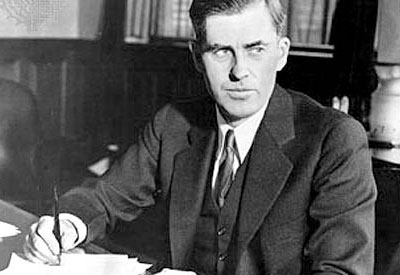
Henry A. Wallace
Born near Orient, Iowa, on October 7, 1888, Henry A. Wallace served as Secretary of Agriculture from March 4, 1933 until September 4, 1940. Considered by many to be one of the department's greatest secretaries, he helped create the Agricultural Adjustment Act, which stabilized farm prices, ensured an adequate food supply, and encouraged conservation. The Rural Electrification Administration, the food stamp program, the school lunch program, and the Food for Peace program all began under Wallace's leadership.
Wallace also created the emergency granary system through which the federal government purchases surplus grain and stores it against future needs. He felt this was his greatest achievement as Secretary of Agriculture.
Wallace also served as Vice President of the United States from 1940 to 1944, and Secretary of Commerce from 1945 to 1946. He was a corn geneticist who helped develop the first commercial variety of hybrid corn, which significantly increased corn yields.
Questions
What abilities did Wallace have that made him capable of so many leadership positions?
Do today's leaders show the same qualities?
What personal qualities do you think most leaders possess?

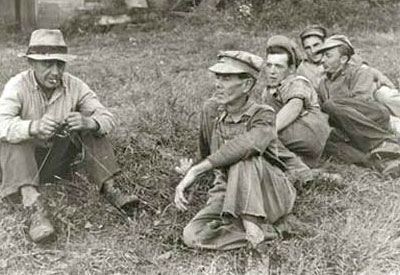
Agricultural Adjustment Act
In 1933, under the Agricultural Adjustment Act, the federal government paid some farmers not to plant their fields. The government hoped this would drive crop supply downward in order to increase demand, drive up prices, and improve farm incomes.
Questions
If you were a farmer in a situation like this, would it be difficult to support the government's decision? Why or why not?
If the plan failed and no rise in prices occurred, how would you react?

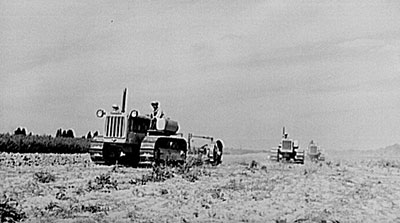
The Check is in the Mail
To help alleviate the struggles of so many Americans, the federal government sent money in the form of checks to countless homes across the country.
"In a couple of days they would be delivered to 10,000 villages, crossroads and lane ends and into the heavy hands of farmers who raise the country's wheat, cotton, tobacco, corn and hogs, and so on."
Questions
How was direct aid going to help the American farmer? Why or why wasn't it essential?
What types of aid does the government provide farmers today?
Frank Freidel, ed., The New Deal and the American People (Englewood Cliffs, N.J.: Prentice Hall, 1964).
Many of President Roosevelt’s "new deal" programs were designed to help farmers, including: the Agricultural Adjustment Acts, the Civilian Conservation Corps, the Farm Security Administration, the Soil Conservation Service and the Rural Electrification Administration. These programs focused on improving farm services, reducing farm surpluses and increasing prices. The USDA and other agencies quickly acted to implement these programs. The goals were to improve the economy and narrow the gap between urban and rural living standards. Programs like the Tennessee Valley Authority in the Southeastern United States, were created to promote new agricultural techniques, replant forests and improve habitat for fish and wildlife. Electricity generated by newly constructed dams made life easier and farms more productive. Momentous change was on the way.

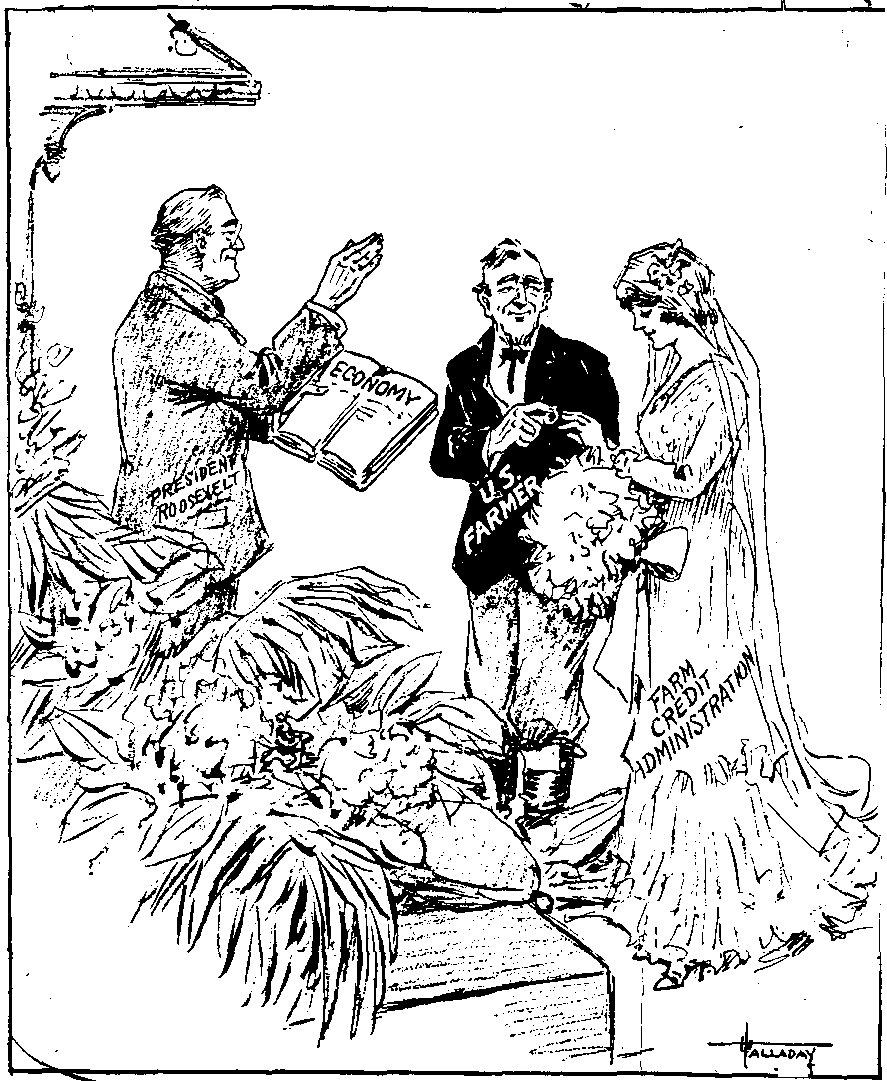
Farm Credit Administration
On March 27, 1933, President Franklin D. Roosevelt (FDR) created the Farm Credit Administration (FCA) with an Executive Order (No. 6084) . This Executive Order was designed to consolidate and streamline various federal efforts that dealt with farm credit into one administrative authority. On May 12, 1933, FDR signed the Emergency Farm Mortgage Act (to be administered by the Farm Credit Administration) to provide lower interest rates and provide farmers with workable loan repayments. To further support struggling farmers, President Roosevelt signed the Farm Credit Act of 1933 on June 16th. This Act created the Production Credit Association, which exists today. The Farm Credit Administration still operates today, as “an independent Federal agency that regulates and examines the banks, associations, and related entities of the Farm Credit System…a nationwide network of lending institutions that are owned by their borrowers. It serves all 50 States and Puerto Rico” (FCA in Brief, 2018).
By the end of the 1930s, it was “estimated that altogether about two million farmers [were] utilizing directly or indirectly the financing services of institutions operating under the Farm Credit Administration,” which had issued over $3,000,000,000 in credit, “representing from one-fourth to one-third of the total credit outstanding to agriculture from all sources” The FCA and the Farm Credit Act proved to be integral parts of the overall New Deal effort to save, stabilize and improve America’s farms – efforts which also included price controls, soil conservation, and rural electrification. And, as farming revived during and after World War II, most federal loans were repaid (Farm Credit Act, 1933).
Questions
If you were going to give a farmer a loan what type of questions would you have asked in 1933 before giving a farmer a loan? Are these questions different today? What additional information might you need to ask?
Moore, G. (2020, August 7). Show me the money. https://footnote.wordpress.ncsu.edu/2020/08/06/show-me-the-money-8-7-2020/

Tennessee Valley Authority
Congress established the Tennessee Valley Authority (TVA) in 1933 to help conserve natural resources, provide flood control, improve navigation of rivers, and bring electric power to seven states in the south-central United States. After reading about the Tennessee Valley Authority, its involvement with agriculture, and its history, answer the following questions.
Tennessee Valley Authority website
Questions
What were the original problems the TVA had to solve?
How did the TVA adapt to solve new problems over time?
Why was the TVA able to change as the needs of the people it served changed?
What did the TVA try to do with agriculture in the region of the United States in which it worked?
How did the TVA utilize research to assist farmers?


Rural Electrification
When power companies argued that it was too expensive to string electric lines to isolated rural farmsteads, the New Deal's Rural Electrification Administration sponsored cooperatives that received low-cost government loans for developing electric power. Read "The Night the Lights Came On" and (Moore, 2020) and "The Night the Lights Came On – True Stories" (Moore, 2020) to answer the following questions.
Questions
Why was it essential to bring electricity to rural America, especially to farms?
What would it be like to live on a farm with no electricity?
What two "true stories" surprised you? Why?
Which recent advances have had the greatest impact on rural and urban society?
Moore, G. (2020, July 10). The night the lights came on. Friday Footnote. https://footnote.wordpress.ncsu.edu/2020/07/08/the-night-the-lights-came-on-7-102020/

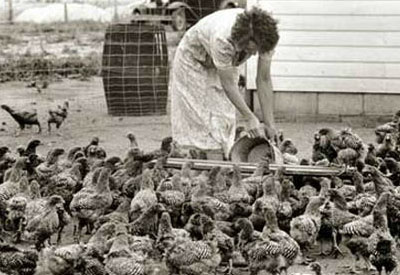
Roanoke Farms
In 1935, Richard McKay and his family joined other tenant farmers from North Carolina to form a cooperative farming community, established by the Resettlement Administration, called Roanoke Farms. President Roosevelt instituted the Resettlement Administration in 1935 to help destitute farm families and to retire marginal land. Programs of the Resettlement Administration included providing special loans and grants, building migrant labor camps, establishing three suburban planned communities, and relocating poor farmers living on destroyed or misused land.
Roanoke Farms was one of the administration's cooperative farming communities where farmsteads were grouped around a local center and the farmland was worked as a group. These farming communities often consisted of both white and black farmers. Hard work was required, but help from the USDA was available. Part of the program consisted of teaching farmers like McKay how to organize their crops to make better use of the land. A reporter visiting the McKay's noted:
"Today, the size of Mr. McKay's farm almost exactly equals the one he farmed as a tenant, but the crop allocation has been worked out by an agronomist. Three acres are in tobacco, and five in cotton, eight in peanuts[,] the rest in woodland and pasture meaning a cash crop of around $800. Methods of scientific crop rotation and strip cropping in another four or five years will increase the productivity of the farm, and if present prices hold proportionally augment the family's cash income. But even more significant in the eyes of Farm Security is the fact that the McKay's, except for coffee, bread and sugar, are raising all the family's food on the farm, which they didn't before. . . On Mrs. McKay's pantry shelves are 468 quarts of canned vegetables which she put up herself to carry the family through the winter."
Questions
Why was the government so willing to assist these farmers?
Why was teaching them the right technique important to their success?
In your opinion, how well did this specific project work?
Charles R. Walker, Homesteaders--New Style, New Deal Network [online].


During the first half of the 1930s much of the nation faced devastating drought. Numerous dust storms swept away valuable layers of topsoil across Texas, Oklahoma, Kansas, Arkansas, New Mexico, and Colorado. These dust storms were made worse by the practice of plowing fields and leaving the soil exposed before planting in the spring. The relentlessly blowing winds turned these areas into the “Dust Bowl.” Thousands of farmers were forced to move from the “dust blown deserts of shattered dreams.”
In the early 20th Century, the introduction of electricity fueled American economy, along with mass production techniques in manufacturing, made popular by Henry Ford's assembly line in the production of the Model T. By 1932, after the Great Depression, US agricultural exports suffered, particularly commodies such as wheat, cotton, and tobacco.

Exports 1930-1960s
From 1930-1939, the average annual value of agricultural exports totaled $765 million/year or 32% of total exports.
From 1940-1949, the average annual value of agricultural exports totaled $2.42 billion/year or 22% of total exports.
From 1950-1959, the average annual value of agricultural exports totaled $3.53 billion/year or 22% of total exports.
From 1960-1969, the average annual value of agricultural exports totaled $5.76 billion/year or 22.9% of total exports.
Questions
Compare and contrast agricultural exports from one decade to another. What story does the data tell you?
Why is this information important?
What questions does this information raise?
In the 1930s the average total U.S. population: 122,775,046; farm population: 30,455,350; farmers 21% of labor force; Number of farms: 6,295,000; average acres: 157; irrigated acres: 14,633,252. It takes 15-20 labor-hours to produce 100 bushels (2 1/2 acres) of corn with 2-bottom gang plow, 7-foot tandem disk, 4-section harrow, 2-row planters, cultivators, and pickers; 15-20 labor-hours required to produce 100 bushels (5 acres) of wheat with 3-bottom gang plow, tractor, 10-foot tandem disk, harrow, 12-foot combine, and trucks. One farmer supplies food and for 9.8 people.
In the 1940s the average total U.S. population: 131,820,000; farm population: 30,840,000; farmers 18% of labor force; Number of farms: 6,102,000; average acres: 175; irrigated acres: 17,942,968. It takes 10-14 labor-hours required to produce 100 bushels (2 acres) of corn with tractor, 3-bottom plow, 10-foot tandem disk, 4-section harrow, 4-row planters and cultivators, and 2-row picker; 42 labor-hours required to produce 100 pounds (2/5 acre) of lint cotton with 2 mules, 1-row plow, 1-row cultivator, hand hoe, and hand pick. One farmer supplies food and fiber for 10.7 people.
As the U.S. population continues to grow the farm population shrinks. Given the hardships of the 1930s and 1940s how do fewer farmers continue to feed a growing population?
USDA-ERS
President Roosevelt sent direct aid to provide relief for the hungry and homeless in the dust bowl, and the USDA took action to stop soil erosion. Hugh Hammond Bennett, a soil conservationist and USDA scientist, fought to bring the problem of erosion to national attention. Bennett supported the passage of a Soil Conservation Act to create a Soil Conservation Service at the USDA. The Soil Conservation Act was passed immediately after a dust storm from the Midwest engulfed the Capitol in April 1935. This new law declared soil erosion a menace to the national welfare and authorized broad powers to attack the problem.

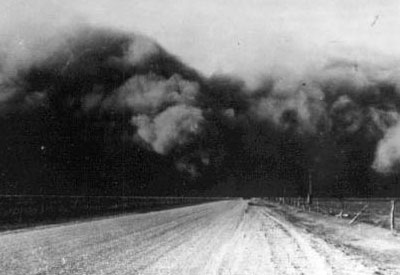
Creating the Soil Conservation Service
As the work of the USDA's Soil Conservation Service began to earn respect among farmers, friends of the soil conservation movement introduced bills into Congress to ensure continued action. During one especially memorable congressional hearing, recounted below by USDA soil conservationist and scientist Hugh Hammond Bennett, a huge dust cloud engulfed Washington, D.C., driving the point home.
"The hearing was dragging a little. I think some of the Senators were sprinkling a few grains of salt on the tail of some of my astronomical figures relating to soil losses by erosion. At any rate, I recall wishing rather intensely, at the time, that the dust storm then reported on its way eastward would arrive. I had followed the progress of the big duster from its point of origin in northeastern New Mexico, on into the Ohio Valley, and had every reason to believe it would eventually reach Washington.
"It did--in sun-darkening proportions--and at about the right time--for the benefit of Public Forty-six.
"When it arrived, while the hearing was still on, we took a little time off the record, moved from the great mahogany table to the windows of the Senate Office Building for a look. Everything went nicely thereafter."
Questions
How did the dust storm help Hugh Hammond Bennett attain success during his testimony before Congress?
How would you have responded had you been in the Senate Office Building at the time of Bennett's testimony?
Douglas Helms, "Natural Resources Conservation Service: Brief History," NRCS History Articles, Natural Resources Conservation Service [online].

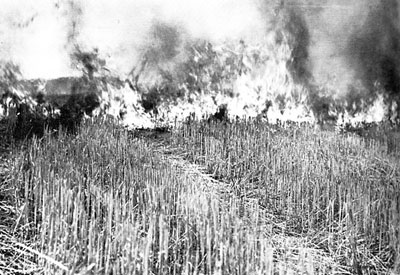
Brush Fires
During the period of widespread drought in the 1930s, the number of brush fires increased. In 1935, there were 140 reported fires. In 1936, that number rose to 226.
Questions
Why was this happening?
Was this just a natural environmental pattern?
Are we still susceptible, or is our technology advanced enough to withstand adverse environmental conditions?
Historical Statistics of the U.S: From Colonial Times to 1970 (Washington, D.C.: U.S. Bureau of Commerce, 1975).
The USDA's soil conservation programs were designed to help farmers change the way they farmed in order to prevent erosion. Members of the Civilian Conservation Corps provided much of the labor to plant native grasses and trees, and helped build ponds on many farms and public lands.

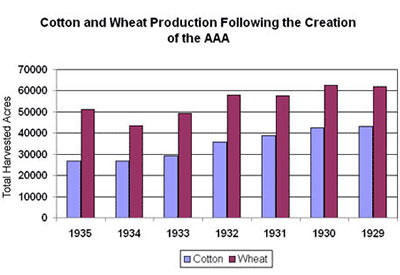
Cotton and Wheat Production After the A.A.A.
Franklin D. Roosevelt promised farmers change through the Agricultural Adjustment Act, which tried to raise farm prices by reducing production levels.
Questions
Although some of his programs were controversial, what began to happen by 1933, just after his election?
Do you think this would have happened without FDR's programs? Why or why not?
How does reducing cotton and wheat acreage help maximize farm income?
Historical Statistics of the U.S: From Colonial Times to 1970 (Washington, D.C.: U.S. Bureau of Commerce, 1975).


The first Agricultural Adjustment Act of 1933 was part of President Franklin Roosevelt’s “new deal.” The act led to a reduction in crop surpluses and higher prices for agricultural products. The price supports paid directly to farmers and ranchers for crop reductions under the act and the extra revenue generated by higher prices caused a fifty percent increase in farm income. This eased the burden of the depression on rural America.
However, some people saw the act as unfair because it was paid for, in part, by taxes on those who processed farm products into food and clothing. In 1936 the act was struck down by the Supreme Court. Congress then passed a second Agricultural Adjustment Act in 1938. The new act retained the best features of the earlier program but was funded by general taxation.
While legislative actions were being taken to help farmers, many Americans were dismayed by the disparity of having farm surpluses while many people went hungry. To help alleviate hunger and reduce surpluses the USDA initiated new food programs. The Food Stamps program provided surplus food to poor families and School Lunch programs used surpluses to feed children. The USDA built four new research labs across the nation to find new uses for agricultural products so that farmers could find new markets for their surpluses. Once relief was flowing, attitudes improved.
The first Agricultural Adjustment Act of 1933 was part of President Franklin Roosevelt’s "new deal." The act led to a reduction in crop surpluses and higher prices for agricultural products. The price supports paid directly to farmers and ranchers for crop reductions under the act and the extra revenue generated by higher prices caused a fifty percent increase in farm income. This eased the burden of the depression on rural America. However, some people saw the act as unfair because it was paid for, in part, by taxes on those who processed farm products into food and clothing. In 1936 the act was struck down by the Supreme Court. Congress then passed a second Agricultural Adjustment Act in 1938. The new act retained the best features of the earlier program but was funded by general taxation.

A New Charter of Economic Freedom
Congress replaced the Agricultural Adjustment Act of 1933 with the Agricultural Adjustment Act of 1938. USDA Secretary Henry A. Wallace called the act "a new charter of economic freedom." The 1933 act caused many people to worry about food shortages because it paid farmers not to plant certain crops. The new act reassured consumers that adequate reserves of food would be maintained.
Questions
Government decisions have widespread effects beyond the groups they specifically concern. Do you see any decisions that are made in your school, home, or work that influence more than just one group?
Why were those decisions made? Whom did they affect the most?
G. Baker, J. Porter, W. Rasmussen, and V. Wiser, eds., Century of Service: The First 100 Years of the United States Department of Agriculture (Washington, D.C.: Centennial Committee, U.S. Department of Agriculture, 1963).

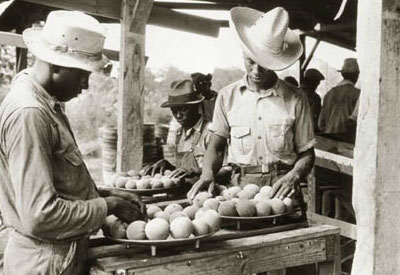
Rising Income
The Roosevelt administration could claim that things were getting better for farmers. The average farm income in 1934 was $431 per farm. One year later it was $775.
Questions
What were some of the reasons for the improvement?
How can environmental factors influence the economy?
How can political events affect the economy?
"Agriculture--Farms, Acreage, Income, and Foreign Trade," Mini Historical Statistics, U.S. Census Bureau [online].
While legislative actions were being taken to help farmers, many Americans were dismayed by the disparity of having farm surpluses while many people went hungry. To help alleviate hunger and reduce surpluses the USDA initiated new food programs. The Food Stamps program provided surplus food to poor families and School Lunch programs used surpluses to feed children. The USDA built four new research labs across the nation to find new uses for agricultural products so that farmers could find new markets for their surpluses. Once relief was flowing, attitudes improved.

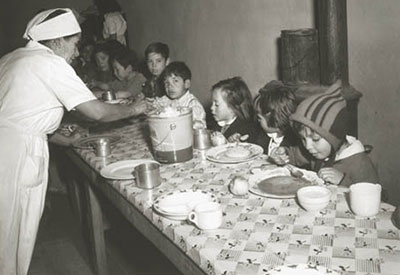
Food Stamps
"In the years leading up to 1939, the USDA had taken 'great interest in alternative proposals for helping needy families buy more foods through the regular private channels of trade.' This was also seen as a potential avenue for the decrease and subsequent rotation of surplus foods. The food stamp plan emerged as a possible solution and in April, 1939, Rochester, N.Y. was designated as the first experimental city with Shawnee, O.K. soon to follow. The food stamp plan is still in use today and serves as a means whereby low-income families can purchase nutritional foods at a discounted rate."
Questions
What is the principle behind implementing the food stamp plan?
What does this say about the government's feeling of responsibility toward all citizens?
G. Baker, J. Porter, W. Rasmussen, and V. Wiser, eds., Century of Service: The First 100 Years of the United States Department of Agriculture (Washington, D.C.: Centennial Committee, U.S. Department of Agriculture, 1963).

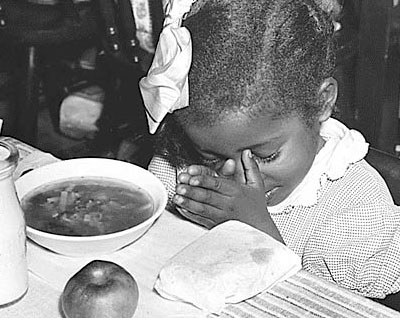
Roots of School Lunch
Although school lunches had been distributed by some school boards, charities, and other organizations before the Depression, direct federal assistance started after nutrition scientists began calling attention to the serious consequences of vitamin deficiencies.
Questions
What is the U.S. government's motivation for the school lunch program and other similar endeavors?
Are programs like this in place in other nations? Why or why not?
G. Baker, J. Porter, W. Rasmussen, and V. Wiser, eds., Century of Service: The First 100 Years of the United States Department of Agriculture (Washington, D.C.: Centennial Committee, U.S. Department of Agriculture, 1963).


In 1939 the growing clouds of war worldwide caused trouble for American farmers. United States agriculture braced for the unknown as foreign markets closed and surpluses surged higher than ever. Although some expected an economic boom, farmers were asked to produce only what was needed at home. However, the situation quickly deteriorated in Europe and elsewhere. America’s allies needed help—in massive quantities.
Early in 1941 the USDA once again urged American farmers into no-holds-barred production. Hog farmers and cattle ranchers were also told to produce more. The Lend Lease Act of that year guaranteed the Allies food and other supplies. At the same time, officials urged American families to conserve food, fuel and other resources. Although surpluses were high, supplies could run out quickly if America entered the war.
To foster conservation, initiatives such as the National Victory Garden program encouraged people to grow their own food at home. As the manufacturing of new armaments for the U.S. military and its allies swelled, jobs opened up everywhere and great numbers of men and women, especially minorities, left farm work for higher paying jobs in industry. It was obvious that America was growing again.
In 1939 the growing clouds of war worldwide caused trouble for American farmers. United States agriculture braced for the unknown as foreign markets closed and surpluses surged higher than ever. Although some expected an economic boom, farmers were asked to produce only what was needed at home. However, the situation quickly deteriorated in Europe and elsewhere. Americas allies needed helpin massive quantities.

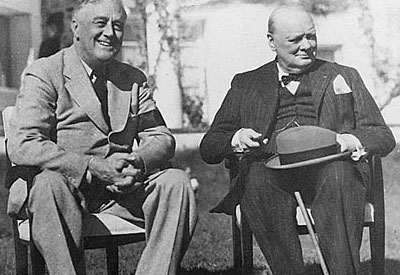
The U.S. Supplies Britain With Food During 1940
"By the fall of 1940 the seriousness of the British food situation was revealed. The [German] air blitz was accompanied by a concerted attempt to prevent supplies from reaching England, and the blockade was carried out with effectiveness. By midwinter the British meat ration had been more than halved, and cheese, canned milk, and almost all other foods had been placed on the ration list. If the fall of Britain was to be prevented, the United States might have to supply her with butter as well as guns."
Questions
How did aid from the United States contribute to Britain's war effort?
What resources are we asked to conserve today? Why?
G. Baker, J. Porter, W. Rasmussen, and V. Wiser, eds., Century of Service: The First 100 Years of the United States Department of Agriculture (Washington, D.C.: Centennial Committee, U.S. Department of Agriculture, 1963).

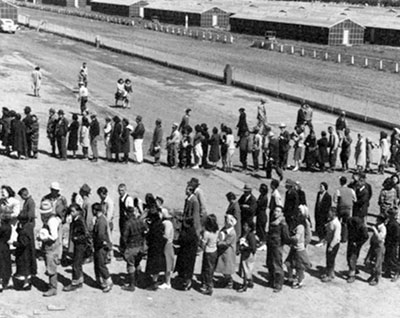
Japanese Internment
Many Japanese Americans were involved in agriculture before the United States entered World War II, particularly in California. In February 1942, President Roosevelt ordered that all persons of Japanese ancestry be relocated to camps away from the Pacific coast. This was done out of fears of espionage and to protect Japanese Americans from the growing anti-Japanese sentiment, which rose to irrational levels following the attack on Pearl Harbor. About 120,000 people were affected by this relocation order, most of them U.S. citizens. The camps were located in remote areas where the detainees were often engaged in agriculture and even grew wartime crops.
Questions
How can improvising and creativity contribute to success in hard times?
Why did the United States send Japanese Americans (many of them successful farmers) to internment camps?
Gary A. Goreham, ed., Encyclopedia of Rural America: The Land and People (Santa Barbara, Calif.: ABC-CLSO, 1997).

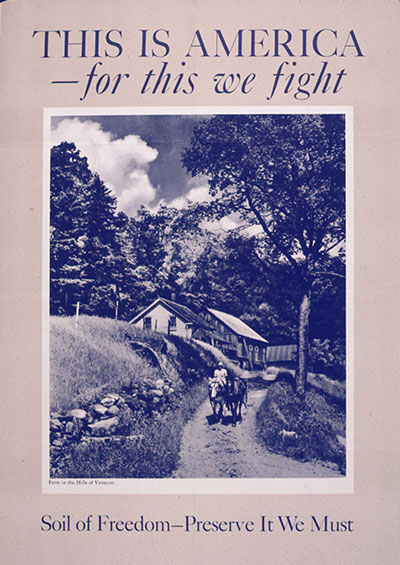
Conserving Soil During the War
In 1939, with the possibility of war on the horizon, Secretary of Agriculture Henry A. Wallace cautioned, "the outbreak of hostilities is not a reason for abandoning our efforts to conserve soil."
Questions
Why was it important that American farmers continue to conserve soil during the war?
What might be the effects of mismanagement of the soil?
The Yearbook of Agriculture, 1940 (Washington D.C.: U.S. Department of Agriculture, 1940).
Early in 1941 the USDA once again urged American farmers into no-holds-barred production. Hog farmers and cattle ranchers were also told to produce more. The Lend Lease Act of that year guaranteed the Allies food and other supplies. At the same time, officials urged American families to conserve food, fuel and other resources. Although surpluses were high, supplies could run out quickly if America entered the war.

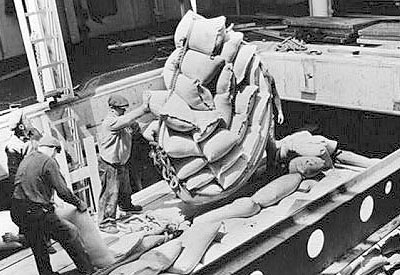
Wartime Food Processing
Most foods require processing before they are ready for consumers. Wartime conditions greatly increased the demand for processed foods of all sorts because the Armed Forces of both the United States and the Allies, and civilian populations abroad, required foods that could be stored and shipped without spoilage in the most concentrated forms practicable. Both farmers and the food trade had to cope with labor, container, and machinery shortages, and sometimes shortages of essential ingredients of the processed product.
Questions
How did scientific research contribute to America's ability to produce, package, and store such high quantities of food?
What are some of the major breakthroughs in food packing research that lead to these practices?
G. Baker, J. Porter, W. Rasmussen, and V. Wiser, eds., Century of Service: The First 100 Years of the United States Department of Agriculture (Washington, D.C.: Centennial Committee, U.S. Department of Agriculture, 1963).

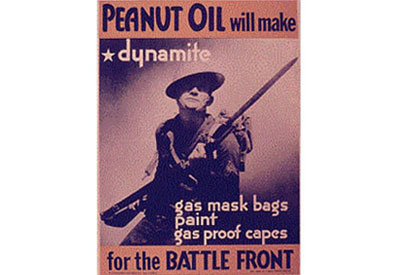
Growing Peanuts for the War Effort
In order to lend support to Britain and other allies, U.S. farmers "were encouraged to make shifts in production from basic crops to some of the special war crops. For example, on April 4, 1941, the Secretary announced that farmers would be permitted to grow peanuts for oil on part of their cotton acreage allotments not used for cotton, without incurring deduction from payments. On June 23, 1941 [about six months before the United States entered the war], farmers were told that they could increase peanut plantings over their allotments if the peanuts were used for oil."
Questions
What motivations did America have for lending aid to Great Britain?
What did the United States receive in return?
How do you think America would have responded if Germany had asked for aid? Why?
G. Baker, J. Porter, W. Rasmussen, and V. Wiser, eds., Century of Service: The First 100 Years of the United States Department of Agriculture (Washington, D.C.: Centennial Committee, U.S. Department of Agriculture, 1963).


Victory Gardens
In December 1941, the USDA helped launch the Victory Garden Program, which encouraged both rural and city people to plant fruits and vegetables. Programs to provide seed, fertilizer, and garden tools were initiated, and many businesses and communities pitched in to provide gardening space. In 1943, more than 20 million victory gardens produced 40 percent of the vegetables grown for fresh consumption. School gardens emerged to aid in the effort where “Every boy and girl should be a producer. The growing of plants and animals should become an integral part of the school program. Such is the aim of the U.S. School Garden Army” (Hayden-Smith, 2006, p. 2). More about school efforts can be found on this the History of Agricultural Education and Rural America website.
Questions
Why is it important to be self-sufficient?
What types of agriculture can individual citizens participate in if they plan carefully?
How can you and your family become more self-sufficient in the future?
G. Baker, J. Porter, W. Rasmussen, and V. Wiser, eds., Century of Service: The First 100 Years of the United States Department of Agriculture (Washington, D.C.: Centennial Committee, U.S. Department of Agriculture, 1963). Hayden-Smith, R. (2006). America

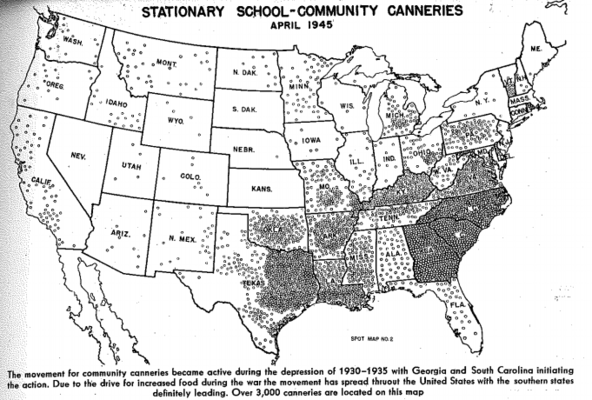
School Canneries
Victory Gardens during World War II were a success, and while the produce was consumed and some sold there was still an abundance that required preservation. In some areas school-community canneries, established during the Great Depression of the 1930s, became busy community centers for home gardeners. Most of the canneries were operated by the school's agriculture education department. Near the end of World War II there were 3,142 school-community canneries in the United States (Naugher, 1946).
Questions
why do you think there was a large concentration of school canneries in the south eastern United States?
What are some other food preservation practices, in addition to canning, used to preserve food beyond the moment of harvest for future consumption?
How does food preservation (processing) help to ensure a steady food supply?
Naugher, R. E. (1946), February). Improving the Program of Instruction in School-Community Canneries. The Agricultural Education Magazine, Vol. 18, No. 8.


The war in Europe continued. Although farmers jumped at the opportunity to produce more for the Allies and make more money for themselves, like most Americans they wanted to stay out of the war. Then the attack on Pearl Harbor changed everything. Farmers dedicated themselves to the "defeat of the Axis." They eagerly adopted science and technology, such as planting hybrid corn, to increase production. Yet even as farm output increased, food rationing went into effect.
Farmers began using more and more machinery to replace animal power. The shift away from horses and mules freed up more land for the production of feed grain for livestock and increased meat production. In 1942, the Food Administration was formed to bolster food production. "Food will win the war and write the peace" became USDA's slogan.
Life on the farm got busy, even hectic, and by the end of 1942 farm labor became scarce. To stem the tide of men leaving farms to go to war, the Government exempted 1,600,000 men from the draft. These farm workers helped fight the war on the home front. The "shock troops" of the countryside made a major difference. By the end of the war U.S. food and fiber production reached record levels. As one farmer declared in a letter to President Roosevelt, they "had surpassed the efforts of any other class of people in these United States."
During World War II the United States Department of Agriculture was directed to intensify agricultural research efforts to meet vital defense needs. Substitutes for rubber, tropical oils, cork and other imported products needed by industry were given priority since the Japanese controlled much of the worlds supply of tropical agricultural products. Farmers began using more and more machinery to replace animal power. The shift away from horses and mules freed up more land for the production of feed grain for livestock and increased meat production. In 1942, the Food Administration was formed to bolster food production. "Food will win the war and write the peace" became USDA's slogan.

Food to Win the War - Video
Watch this video to learn more about the role of agriculture in wartime.
Questions
Why is agriculture important during times of war?
Who is the intended audience for this film?
Film - Food to Win the War, 1942, courtesy of U.S. National Archives and Records Administration.


Military Food Needs
In 1941, the military purchased 2 percent of the total food produced in the United States. That number continued to increase during World War II and peaked at 14 percent of the food supply by 1944.
Questions
How did the military's increase in purchases benefit farmers?
Under what political conditions do you think farm purchases increase the most?
Harold D. Guither, Heritage of Plenty (Danville, Ill.: Interstate, 1972).

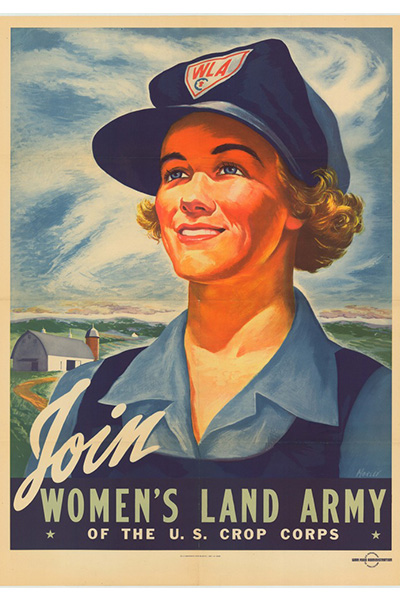
Women's Land Army of WWII
On January 12, 1943, Farm Mobilization Day, President Franklin D. Roosevelt stated, "Food is the life line of the forces that fight for freedom. Free people everywhere can be grateful to the farm families that are making victory possible." With help and encouragement from the USDA for assisting in agricultural production, the creation of the Women's Land Army (WLA), 1943, was a grassroots effort to help win the war. Florence Hall was appointed as the head of the WLA on April 12, 1953, and supervised over three million nonfarm women, about 27% of the agricultural work force. These women, many who came from towns and cities, were responsible for planting, cultivating, and harvesting crops to help combat food shortages. The US Women's Bureau statistics show that 8% of women worked in agriculture in 1940, with that number rising to 22.4% in 1945.
Based on her experience as part of the WLA, one woman stated that "A bottle of milk will never be just a bottle of milk to me again." Another said, "No matter how heavy the hay we pitched, how our backs ached from weeding, or how stubborn the team we were driving, we always had the secret joy that we were helping the war effort."
For more on the contribution of the Women's Land Army read the National Archives article "To the Rescue of the Crops."
Questions
Explain why was the Women's Land Army significant to the WWII effort?
How did the creation of the WLA and its efforts reflect the economy of the nation?
What do you think was the greatest impact on women's lives based on their experience in the WLA? How can it relate to service today?
To view and analyze the messaging concerning the Women's Land Army, Google Women's Land Army posters. Can you tell the difference between the WWI and WWII posters and messages?
Litoff, J. and Smith, D. "To the Rescue of the Crops." Prologue Magazine. National Archives, 1993.
Life on the farm got busy, even hectic, and by the end of 1942 farm labor became scarce. To stem the tide of men leaving farms to go to war, the Government exempted 1,600,000 men from the draft. These farm workers helped fight the war on the home front. The "shock troops" of the countryside made a major difference. By the end of the war U.S. food and fiber production reached record levels. As one farmer declared in a letter to President Roosevelt, they "had surpassed the efforts of any other class of people in these United States."

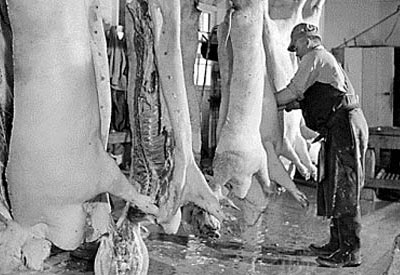
Selling Pork
In 1940, ranchers sold their pork for $5.71 per hundred pounds. In 1941, they sold pork for $9.45 per hundred pounds.
Questions
What did the prospect of war do for farming? Why?
How can shortages in supply influence price?
Historical Statistics of the U.S: From Colonial Times to 1970 (Washington, D.C.: U.S. Bureau of Commerce, 1975).

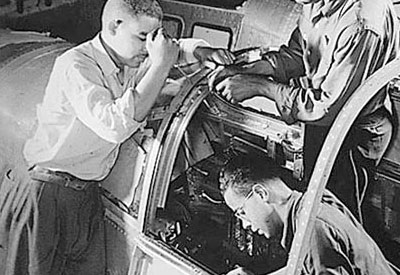
Southern States' Population Loss During WWII
The rural South saw a drastic reduction in population during World War II. As America geared up for war, many people, especially African Americans, traveled north to find jobs at war factories. During the war, rural population in the South declined from 23 percent to 20 percent of the total U.S. population.
Questions
Why would so many African American people want to leave farms in the South for factory jobs in the North?
Why were the factories in the North?
Ian Dear, ed., Oxford Companion to World War II (Oxford: Oxford University Press, 2002).

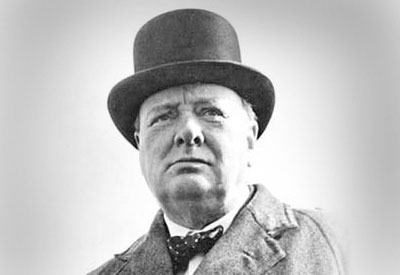
Lend-Lease
Winston Churchill, the Prime Minister of Great Britain during WWII, implored President Roosevelt for help during the conflict. In March of 1941, help came in the form of a program called Lend-Lease. It was "An Act to Promote the Defense of the United States" and to help its allies. One of the "defense articles" was any "agricultural" commodity.
Questions
How did U.S. agriculture assist the war effort?
What types of foods have been researched and developed for today's military?
Alfred B. Rollin, Depression, Recovery, and War (New York: McGraw-Hill, 1966).


During World War II the United States Department of Agriculture was directed to intensify agricultural research efforts to meet vital defense needs. Substitutes for rubber, tropical oils, cork and other imported products needed by industry were given priority since the Japanese controlled much of the world’s supply of tropical agricultural products.
USDA scientists also developed better methods of food dehydration in order to supply the troops with nutritious food. They developed dehydrated or “instant” potatoes, new techniques for drying milk, “powdered” eggs, and processes for combining various dried vegetables and meats into prepackaged soups and stews. These improved methods of food preservation helped reduce weight and bulk and made shipping and food storage easier.
New glues, plastics, paints and fabrics were developed from milk, soybeans, cotton and many other agricultural commodities. Wood building techniques developed by USDA scientists were used in American bombers. The military adopted aerial mapping and photography techniques that had been pioneered by the USDA Forest Service and Soil Conservation Service. After the War, private industry commercialized many of the products developed by USDA researchers.
Of all these endeavors, the mass-production of penicillin became the most important contribution of agricultural researchers during World War II. The result of this research saved the lives of millions of people, and after the war it launched a new pharmaceutical industry. Agricultural science made a tremendous contribution to winning the war.
USDA scientists also developed better methods of food dehydration in order to supply the troops with nutritious food. They developed dehydrated or “instant” potatoes, new techniques for drying milk, “powdered” eggs, and processes for combining various dried vegetables and meats into prepackaged soups and stews. These improved methods of food preservation helped reduce weight and bulk and made shipping and food storage easier. New glues, plastics, paints and fabrics were developed from milk, soybeans, cotton and many other agricultural commodities. Wood building techniques developed by USDA scientists were used in American bombers. The military adopted aerial mapping and photography techniques that had been pioneered by the USDA Forest Service and Soil Conservation Service. After the War, private industry commercialized many of the products developed by USDA researchers.

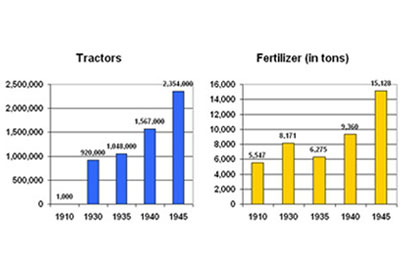
Two Advances Revolutionize Agriculture During the War
The growing use of tractors and other machinery, and the addition of new chemical fertilizers and pesticides, revolutionized agriculture. With new and innovative technology, one farmer could do the same work that, just years before, would have required fifteen to twenty workers. Crop yields were increasing substantially.
Questions
What was happening on the farm?
What effect did this have on the environment?
Historical Statistics of the U.S: From Colonial Times to 1970 (Washington, D.C.: U.S. Bureau of Commerce, 1975).

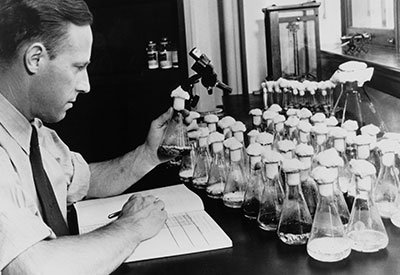
Penicillin Research
The ability to mass produce the antibiotic drug penicillin, using methods developed by USDA researchers, became one of the most important scientific contributions during World War II. Read The Penicillin Story at the USDA website and answer the following questions.
Questions
Why is teamwork essential to achieving success?
How and why did the USDA contribute?


As World War II ended, thoughtful preparation was required to prevent the return of agriculture to pre-war Depression conditions. Four million acres of crops were plowed up and a peacetime economy was formed.
However, the need for food in war-torn Europe and Asia remained high. In 1948 the United States Congress passed the Marshall Plan to meet this need, and American farmers carried on with their important work. Former USDA Secretary Henry A. Wallace had once said that the U.S. has a "moral responsibility to feed the hungry people of the world." The United States sent millions of tons of food abroad to prevent mass famine in the years after the war. Under the Marshall Plan livestock, seed, fertilizer and farm machinery were also sent overseas to help rebuild Europe’s agricultural system and European farmers visited the United States to learn American farming techniques.
As the world entered the post-war recovery period, agricultural improvements continued with new research in plant and animal science, human nutrition, soil conservation, and research into new food and agricultural products. When Congress passed the G.I. Bill in 1944, providing Veterans with educational and other benefits, enrollment in land grant colleges soared. More and more men and women graduated and took agricultural jobs off the farm with the goal of feeding the world. A post war boom was in motion, and major changes in the field of agriculture lay on the horizon.
As World War II ended, thoughtful preparation was required to prevent the return of agriculture to pre-war Depression conditions. Four million acres of crops were plowed up in an attempt to stablize prices, and a peacetime economy was formed.

A Revolution in Farming
When WWII ended, technological advances that had been developed for the war were transitioned to civil society. Farms were industrialized for several reasons. From chemical technology, inexpensive nitrogen fertilizers and pesticides were created to increase agricultural production. Advances in machinery, including gasoline and electric-powered engines, transformed the farm from agrarian to industrial. Lessons learned from the Dust Bowl led to increased use and development of irrigation technologies.
From the following website, explore the seven sections from Farming in the 40s: Farm Life, Water, Crops, Making Money, Machines, Pests and Weeds, and World Events.
Questions
Review three of the seven sections.
List the most important idea from each section, and explain why it is relevant or important?
What questions does this information raise? What is its meaning in today's world?
Ganzel, B. "WWII Causes a Revolution in Farming." Farming in the 40s. Wessels Living History Farm, 2017. Web. 19 July 2018.


Ranching with a Renewable Resource - Grass
What is rangeland? When the term first came into use in the 1800s, it was used to describe the extensive, unforested lands dominating the western half of North America. Today, rangeland refers to a large, mostly unimproved section of land that is used for livestock grazing. Rangelands can be found in a wide variety of ecosystems, including natural grasslands, savannas, shrublands, deserts, tundras, alpine communities, coastal marshes, and wet meadows. Rangelands are usually mountainous, rocky, or dry areas that aren’t suitable for growing the usual farm crops. However, grass and other plants on this rangeland can be used for grazing livestock. People can’t eat grass but cattle and sheep can turn grass into beef and lamb.
Cattle and sheep are like rangeland lawn mowers that can help care for grassland ecosystems. Imagine what your lawn would look like if you didn’t mow it! At first glance when we see animals grazing, it seems like the animal wins all. However, there are more winners here than first meets the eye. The moment grass is shorn, it seeks to restore a balance between its roots and leaves. When the tops of the grass leaves are eaten by grazing livestock, the same amount of root is lost. When the roots die, the soil’s population of bacteria, fungi, and earthworms gets to work breaking down the dying roots. This creates fertile organic matter that enriches the soil.
Rich soils in turn support more grass growth. Grasses regrow from the bottom up. Because their growing point is low to the ground, grasses can usually recover well after grazing. However, repeated, heavy grazing can kill grass. When a grass plant is grazed very low to the ground, a large portion of its roots die, and it has little leaf area left to make energy through photosynthesis. Because the plant can’t generate much energy, it takes a long time for the roots to regrow, and the plant is very susceptible to drought. Proper management of grazing involves moving livestock to a new area before grasses are grazed too low and allowing grasses a period of rest to regrow leaves and roots before grazing them again. With proper management, grazing can be a tool for keeping rangelands healthy.
In well-managed grasslands, decaying roots are the biggest source of new organic matter, and grazing animals actually build new soil from the bottom up. In the absence of grazers, the soil-building process would be nowhere near as swift or productive. Grazing cattle aerate the soil with their hooves, scatter seeds, and trim wild grasses. Wildfires have a harder time taking hold on shorter, cropped grass than on longer vegetation. Properly grazed or “mowed” grass can help create healthy green grass!
Questions
Why are rangelands are generally not ideal for crop farming?
Explain how grazing can be beneficial and detrimental to the land.
As the world entered the post-war recovery period, agricultural improvements continued with new research in plant and animal science, human nutrition, soil conservation, and research into new food and agricultural products. When Congress passed the G.I. Bill in 1944, providing Veterans with educational and other benefits, enrollment in land grant colleges soared. More and more men and women graduated and took agricultural jobs off the farm with the goal of feeding the world. A post war boom was in motion, and major changes in the field of agriculture lay on the horizon.


Servicemen's Readjustment Act
In June 1944, President Roosevelt signed the Servicemen's Readjustment Act into law. Commonly known as the G.I. Bill, the act helped military men returning from war go to college, find a job, obtain medical care, buy a home, or start a business or a farm. The bill allowed eligible men to receive loans to help buy "land, buildings, livestock, equipment, machinery, or implements, or in repairing, altering, or improving any buildings or equipment, to be used in farming operations."
Questions
Why were veterans given the opportunity to educate themselves or purchase farms?
How would this help the economy over time?
Why is the ability to start a farm or to become educated so important to our personal welfare?
Jerome Agel, ed., The Words That Make America Great (New York: Random House 1997).

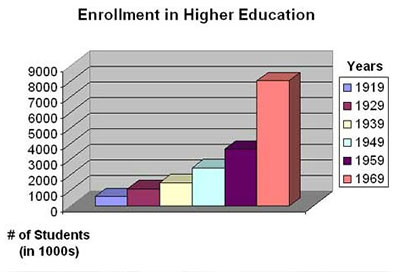
Enrollment in Higher Education
Questions
How did the G.I. Bill help promote education in America?
How did the promotion of education influence future USDA research?
How has the increase in education enhanced the level of research knowledge?
"High School Graduates, and College Enrollment and Degrees," Mini Historical Statistics, U.S. Census Bureau [online].
In 1948 the United States Congress passed the Marshall Plan to meet this need, and American farmers carried on with their important work. Former USDA Secretary Henry A. Wallace had once said that the U.S. has a "moral responsibility to feed the hungry people of the world." The United States sent millions of tons of food abroad to prevent mass famine in the years after the war. Under the Marshall Plan livestock, seed, fertilizer and farm machinery were also sent overseas to help rebuild Europe’s agricultural system and European farmers visited the United States to learn American farming techniques.

Rebuilding Foreign Countries After the War
The Economic Cooperation Act, or Marshall Plan, was a major U.S. foreign aid program to rebuild the war-torn countries of the world after World War II. Visit the U.S. Agency for International Development's Marshall Plan website and explore this important postwar economic program.
Questions
Why did the United States launch the Marshall Plan? How effective was the plan in achieving its goals?
Why would a victorious nation like the United States invest so heavily in rebuilding not only its allies, but the nations it had defeated?
How would Americans today react to rebuilding a nation that they had defeated in a war?

Putting the Marshall Plan Into Action
The Marshall Plan was the foreign policy of U.S. Secretary of State, George C. Marshall. He wanted to help encourage peace by rebuilding the agricultural prosperity of war-ravaged countries using American surpluses and technology. Watch this video to learn more about how the Marshall Plan was put into action.
Questions
How did the Marshall Plan help Greece?
Do you think the Marshall Plan helped Europe recover from the war?
Should the United States continue to help war-torn countries? Why or why not?
Text adapted from U.S. State Department, U.S. Facts: The Marshall Plan (1947) (online); film The Marshall Plan at Work in Greece, 1950, courtesy of U.S. National Archives and Records Administration.
Two agricultural acts were passed by the United States government at the end of this era. One being the Agricultural Act of 1948 and the second being the Agricultural Act of 1949. Each law set-up a framework to guide the work of agriculture in the United States.

The Agricultural Act of 1948
The Agricultural Act of 1948 was created by the 80th Congress of the United States on July 3, 1948. This iteration or version of the farm bill included three sections or titles—Title I: 1949 Price Stabilization, Title II: Amendments to the Agricultural Adjustment Act of 1938, and Title III: Miscellaneous. This new version of the farm bill addressed prices of crops such as cotton, wheat, corn, tobacco, rice, and peanuts. The bill also made several changes or amendments to the 1938 bill such as agricultural commodity; parity prices’ price support; listings of supply percentages and; marketing quotas of corn, wheat, cotton, rice, and tobacco.
Questions
Why did congress deem it necessary to create a farm bill at this time in America’s history?
What are the pros and cons of some of the guidelines set out in this bill? In your response please be sure to explain why you believe this to be the case.
The National Agricultural Law Center. (n.d.). Agricultural Act of 1948.

The Agricultural Act of 1949
Like the Agricultural Act of 1948, the Agricultural Act of 1949 had several sections divided into titles. Much like the 1948 bill, the 1949 farm bill also included items concerned with agricultural commodities and miscellaneous areas of agriculture. This bill also included a section on acreage base and yield system.
Questions
What are the similarities and differences between the 1948 and 1949 laws?
Why do you think the government chose to change certain things while leaving other things the same within the farm bills of 1948 and 1949?
United States Senate Committee on Agriculture, Nutrition, & Forestry. (2018).

Copied url to clipboard!



